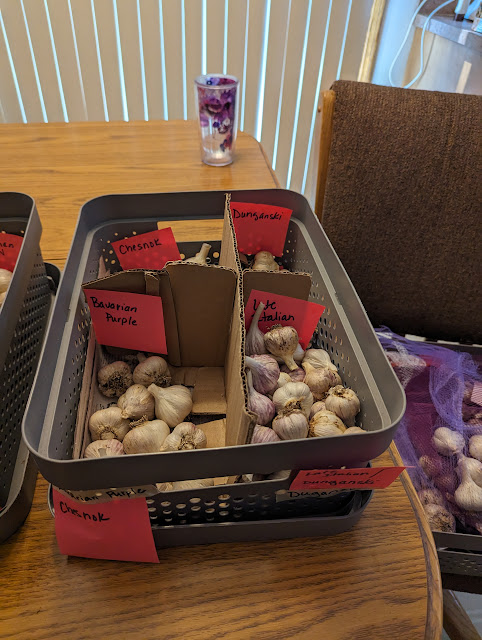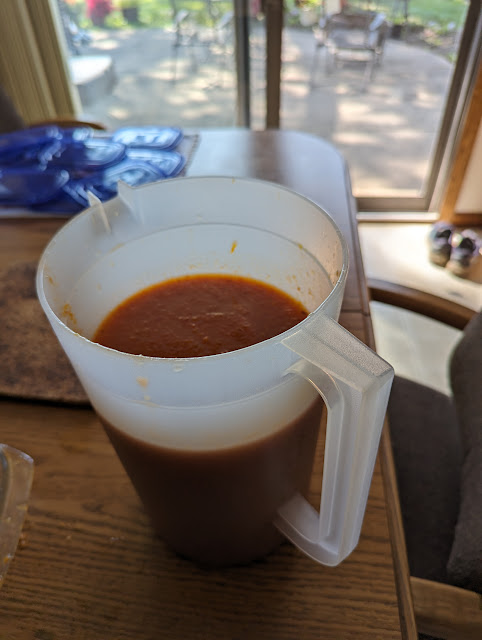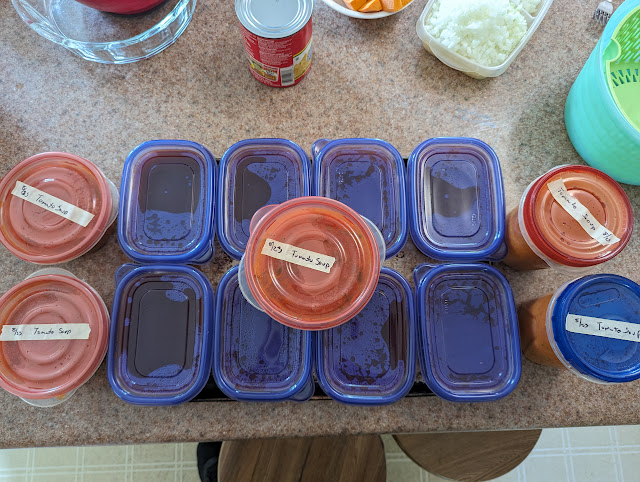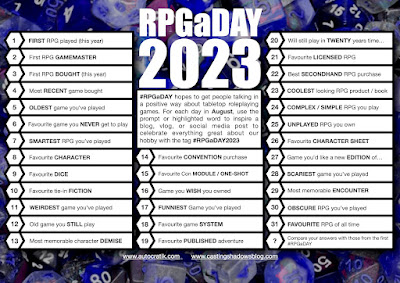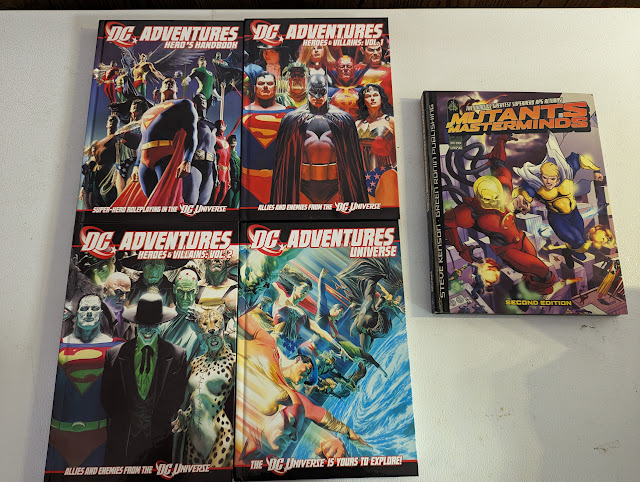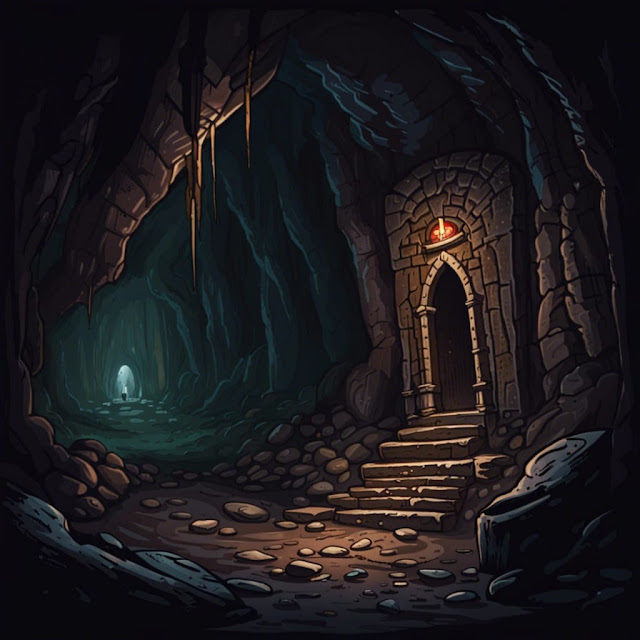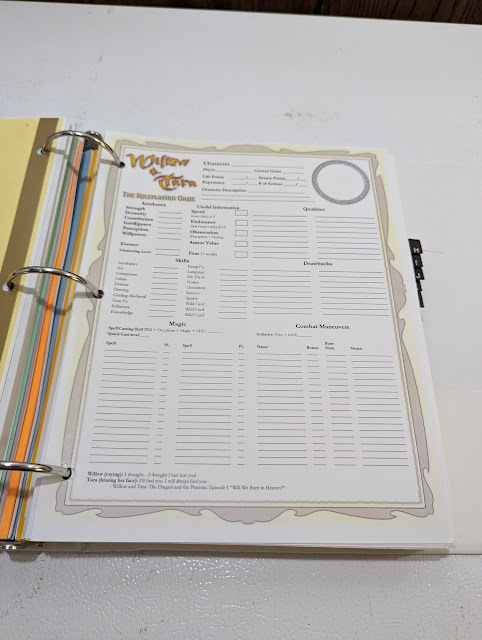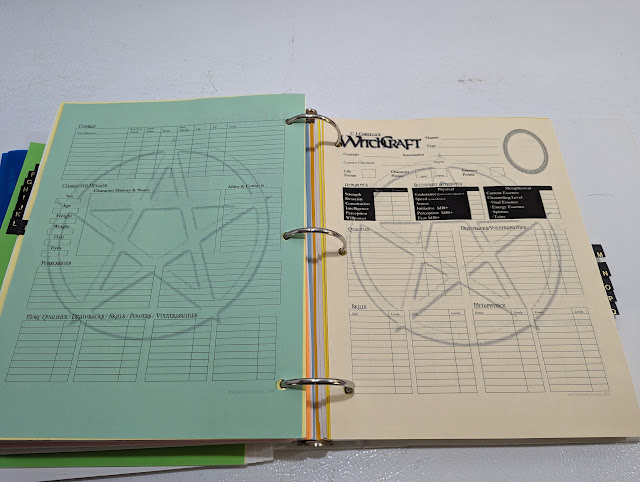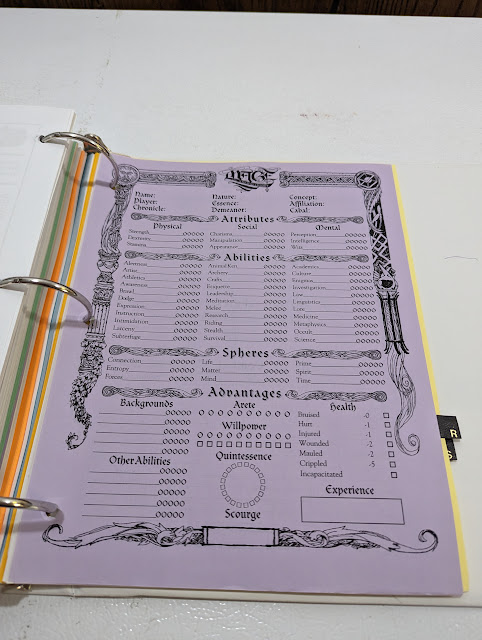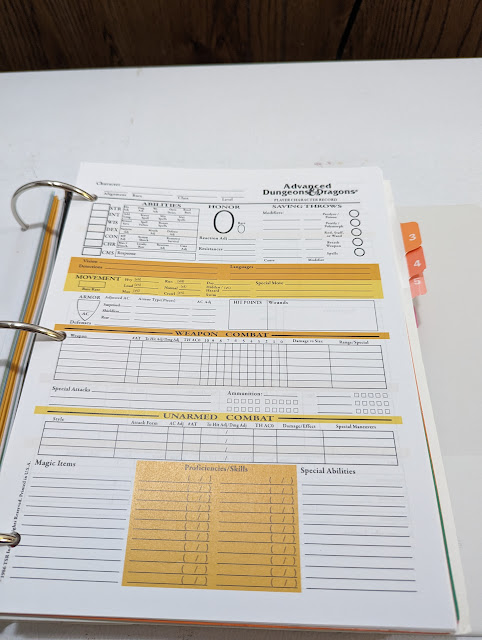Now in its sixteenth year, Free RPG Day for 2023 took place on Saturday, June 24th. As per usual, Free RPG Day consisted of an array of new and interesting little releases, which are traditionally tasters for forthcoming games to be released at GenCon the following August, but others are support for existing RPGs or pieces of gaming ephemera or a quick-start. Thanks to the generosity of David Salisbury of Fan Boy 3, Fil Baldowski at All Rolled Up, and others, Reviews from R’lyeh was able to get hold of many of the titles released for Free RPG Day, both in the USA and elsewhere.
—oOo—

The most radical release for Free RPG 2023 is as in previous years,
Level 1. Published by
9th Level Games,
Level 1 is an annual RPG anthology series of ‘Independent Roleplaying Games’ specifically released for Free RPG Day. Where the other offerings for Free RPG Day 2023—or any other Free RPG Day—provide one-shots, one use quick-starts, or adventures,
Level 1 is something that can be dipped into multiple times, in some cases its contents can played once, twice, or more—even in the space of a single evening! The subject matters for these entries ranges from the adult to the kid friendly and from action to cozy, and back again, but what they have in common is that they are non-commercial in nature and they often tell stories in non-commercial fashion compared to the other offerings for Free RPG Day 2023. The entries in the anthology often ask direct questions of the players, deal with mature subjects, and involve varying degrees of introspection, and for some players, this may be uncomfortable or simply too different from traditional roleplaying games. So the anthology includes ‘Be Safe, Have Fun’, a set of tools and terms for ensuring that everyone can play within their comfort zone. It is a good essay and useful not just for the games presented in the pages of
LEVEL 1 – Volume 1,
Level 1 Volume 2, and
Level 1 Volume 3, which were published for their Free RPG Day events in 2020, 2021, and 2023 respectively, but for any roleplaying game.
The games in
Level 1 Volume 4 all together require dice, tokens, a deck of ordinary playing cards, a tarot deck, and even gifts such as incense, drinks, food, oils or lotions, or a song. It should also be noted that many of the entries include a solo option. The anthology features fourteen roleplaying games all with the theme of ‘endings’. This does not necessarily mean
the end, though it does in several of the titles in the anthology, but the end of situations and circumstances. Consequently, the ‘Be Safe, Have Fun’ safety tools are perhaps more pertinent than in previous issues of the anthology.
The first entry in
Level 1 Volume 4 though, does deal with a finality. Mark Kennedy’s ‘Hero Catastrophe’ is a storytelling game of the last hurrah of classic epic fantasy genre heroes. They are lost in a magical wilderness with no hope of escape, but armed with four Moves in common—‘Manifest’, ‘Manipulate’, ‘Master’, and ‘Master’—and a weapon and a Heroic Silhouette, such as Warrior, Rogue, Mage, Druid, or Bard, they will be faced with catastrophe after catastrophe, and whilst they can make changes to the world around them, will ultimately fail, wrestling with their fate. They have limited Harm they can suffer and a Fate number and a Death Roll. When this Fate number is rolled on Move, something tied to the Player Character’s Fate will happen to his benefit, whilst when the Death Roll is rolled, it indicates a Fail and each Fail necessitates a roll on the ‘Catastrophes’ table. Procedural in nature, ‘Hero Catastrophe’ is designed to have the players and their heroes ultimately fail, but how they fail and what their last stories are is what matters.
If ‘Hero Catastrophe’ deals with imminent death, ‘Filling an empty breath’ by Dustin Blottenberger deals with a failed funeral ceremony to deal with a death, leaving one of the undead at the Player Characters’ feet. This is the roleplaying game where the gifts are partaken of and the aim is to break the curse that left the deceased one of the restless dead, first establishing connections to the deceased and thus each other, write a eulogy for them, and then describe what went wrong, how the revenant has changed and what their wishes are, and ultimately what rituals need to be performed to put them to rest. This creates a set of written artefacts, which each player must decide if he wants to sacrifice or not. If everyone does, the revenant is laid to rest, but not if a player decides not to. ‘Filling an empty breath’ is storytelling game, primarily driven by prompts, that will see the Players Characters decide the fate of the revenant and the consequences of that fate.
‘Daiquiris and Drunk Girls’ by K.J. and C.J. Lappin is the most fun of the entries in the anthology. It enables the players to roleplay the events of a hen do or bachelorette party and the end of the bride being single. As the players describe their character’s activities, such as karaoke or discovering that really is Elvis who turned up at the bar, they attempt to collect enough Cool Points to actually look cool and be remembered for the great party everyone had before the Mean Bartender accrues too many Anger Points or the characters too many Drunk Points and the Mean Bartender throws them out. ‘Daiquiris and Drunk Girls’ is simple and easy to play, but in embracing the clichés of the situation, there is scope too for some fun roleplaying.
The earlier ‘Hero Catastrophe’ explored the afterlife of heroes. M. Belanger’s ‘Rainbow Bridge’ does the same for household pets. In comparison, this is a safe space, with the pets going on a journey together and having two types of encounters along the way. A Memory is of their past life, a good time which can be shared with others, whilst a Passage gives a character the opportunity to move on to a new life. The players share these until all of the characters have taken advantage of a Passage. ‘Rainbow Bridge’ is the simplest and lightest of the entries in
Level 1 Volume 4. ‘Live Without Warning’ is a solo game which explores the last day of the character. Written by Rue Dickey, the character uses Comfort to make his life and those others easier, Thrill to add excitement, and Recompense to address regrets and become a better person. The player draws from a tarot deck to determine a prompt and rolls the dice to determine whether the character struggles with the event or learns from it. This occurs once an hour over the course of twelve hours until an attribute is reduced to zero or the day is over. At which point, the player takes the time to reflect upon the day. Like the earlier ‘Rainbow Bridge’, ‘Live Without Warning’ is simple, but it is more reflective and mature in tone.
Nat Mesnard’s ‘Adventurer’s Respite’ returns to the subject matter of the earlier ‘Hero Catastrophe’. Rather than taking place in an afterlife, the adventurers have come to a valley known for its restorative benefits. Arriving at the Last Homely Hall, the Player Characters realise how tired they are, but want to share what brought them to the valley. In turn, the Player Characters will visit various locations in the valley and attempt to finding healing here. This can be positive or negative, the player narrating the outcome, with the aim being not to lose any Health. If all of the Player Characters lose all of their Health, they are lost to the valley, but a Player Character can sacrifice his own Health to restore others. Players are free to reflect on what their characters gained from the respite if anything, determined mostly by their Health.
‘A Necessary Miracle’ by Gabrielle Rabinowitz is a journaling game in a similar style to
Thousand Year Old Vampire. It is about recovering an important treasure which has been lost to you. The player has coins he can spend to gain Miracles in the hunt for the lost object and can effectively never run out, though he not have enough coins to gain the benefit of the greater miracles. ‘A Necessary Miracle’ is short and sweet and benefits from an example of play even for a game as small as this.
Two of the roleplaying games in
Level 1 Volume 4 deal with getting lost as much as with endings. Noah Lemelson’s ‘Labyrinth’ is about searching for endless maze whilst being chased by the equivalent of a Minotaur. It is not necessarily the half-man, half-bull of classic Greek mythology, but still a guardian of the Labyrinth which hunt the Wanderers. Both the players and the Spirit of the Labyrinth—the Game Master—define Character Trait cards and Revelation Cards. Character Traits are divided between Traits which define facts about them and Regrets, vague memories of something wrong they did in the past. They also define Revelation Cards, each of which consist of cards for Memory, Object, Location and a Fact About the Minotaur. The Spirit of the Labyrinth reassigns the Character Trait cards randomly to the players and their Wanderers, and will give out the Revelation Cards during play. Wanderers also have a Class—‘The Muscle’, ‘The Survivor’, ‘The Intellectual’, and ‘The Strange’—which defines their die type when rolling Actions. If a player successfully rolls an Action, he narrates the outcome of the Action. Otherwise, the Spirit of the Labyrinth does it. As the Wanderers explore the ever-changing sections of the labyrinth, they begin to recall memories, triggered by the Revelation Cards the Spirit of the Labyrinth hands out. Eventually, all of the Revelation Cards will be given out, memories regained and explored, and full facts known about the Minotaur, leading to a confrontation with the beast. This can be played out in any fashion, narratively or mechanically. Part of the challenge of ‘Labyrinth’ is playing with its randomly assigned Traits and revealed Revelation Cards, and the desire to escape does give it a decent drive.
‘Are You Lost, Traveller?’ by H.L. Black has a labyrinthine quality to it, but has a more interesting set-up than ‘Labyrinth’ does. The Player Characters are both players and their Avatars, playing or exploring one last virtual world before it is shut down. Each Aavatar has a Connection, a combination health and Wi-Fi strength, which if reduced to zero, boots them from the server. It includes a sample world/game called ‘Eternal Realm ’98’ and without that, ‘Are You Lost, Traveller?’ is underwritten, neither Game Master or nor player not knowing quite what to do with the mechanics. A lost opportunity and done better with
.Dungeon.
‘Dear Marley’ takes the players back to high school. It can be their high school or a high school of their imagination, but Brigitte Winter’s game take place on the last day. Everyone is friends—more or less-with Marley, the heart of their social group. The game establishes their relationship with Marley and then as they reflect on the end of their time at high school, tell the stories of four yearbook photos in which they and Marley both appear. In the process, they leave messages in in the yearbook and the tells the story of the relationship. This is developed until the yearbook is full and the class song is sung and then everyone has the chance to reflect upon what they created. The connections and relationships are created randomly and that is what prompts the changes to the relationships over the course of the game.
Sylvia Gimenez’s ‘Hauntrification’ is about ghosts. The players take the roles of a Wraith, Poltergeist, Banshee, or Maze, and have to learn to deal with the arrival of mortal Newcomers in their Home, both controlled by the Game Master or Voice of the Living. As Ghosts they have a background in both life and death plus a Binding which ties them to the Home and Bonds with each other. ‘Hauntrification’ is primarily set-up in that it establishes the Ghosts, their Home, and the Newcomers, and then leaves what happens next up to the players. Do the Ghosts want to drive the interlopers from their Home, come to some arrangement, and do something else? Supplied with an example scenario, ‘Hauntrification’ does feel like the BBC and CBS television series
Ghosts, although the Newcomers can only sense the Ghosts and possibly their emotions. The Ghosts have a surprising degree of agency, but affecting the living is hard work in this fun roleplaying game.
‘ARC – A Game About The End’ by Zak Eidsvoog & Ian Rickett is a storytelling game about the story of a Subject, from beginning to end. The Subject could be the life of one person or of a whole empire. Players take it in turns to define the Subject and then in turn a Desire that the Subject wants. Whether or not the Subject gets a Desire is determined by a vote, which is held once each Desire is established. The outcome is narrated and a new Desire chosen. Once four or more Desires have been voted on and their outcome narrated, the game ends with each player narrating a Legacy based on the completed story of the Subject. Several sample Subjects and Desires are suggested, but it is easy to create these in play. Being played without cards or dice, ‘ARC – A Game About The End’ is an easy, straightforward framework with which to tell stories almost anywhere.
The penultimate roleplaying game in
Level 1 Volume 4 is ‘Atop the Burning Heap’. Designed by Goat Song Publishing, this is a single player game of pyrrhic victory. It uses the Spades cards from a standard deck of playing cards to represent obstacles the player has overcome, whilst the other cards—Diamonds are resources, Clubs are people, and Hearts are morals—represent the costs paid or sacrifices made to overcome these obstacles. Their values determine if they overcome the value of the Spades cards. The player does not name or identify the exact nature of the costs or sacrifices at the time they are made in play. Instead, this is done in the epilogue when the player also asks if they were worth making. The setting for ‘Atop the Burning Heap’ is a city rife with crime and political infighting and comes with tables corresponding to the four suites in the deck of playing cards, but the player could easily create tables of his own. This is another relatively short roleplaying game, but one that intentionally saves the shock of the player’s failure until the very end.
The last entry in
Level 1 Volume 4 is ‘An Epic Ending – A Game About Dying For What’s Right’ by Helena Real. It returns to the subject of fantasy heroes and their final chapter. It uses the
Powered by the Apocalypse mechanics to tell their desperate self-sacrifice which if successful, will stop a villain threatening all of reality. Consequently, it is the closest to a traditional roleplaying game in the anthology, but still intended to be played in a single session. Anyone familiar with P
owered by the Apocalypse will have no issue setting this up and running it, but for anyone coming to the roleplaying game and its rules anew, ‘An Epic Ending – A Game About Dying For What’s Right’ will feel very incomplete. Even the author recommends reading a Powered by the Apocalypse to understand the mechanics. Consequently, the setting or settings possible in ‘An Epic Ending – A Game About Dying For What’s Right’ feel underwritten or incomplete and it brings
Level 1 Volume 4 to a close in an underwhelming fashion.
Physically,
Level 1 Volume 4 is a slim, digest-sized book. Although it needs an edit in places, the book is well presented, and reasonably illustrated. In general, it is an easy read, and most of it is easy to grasp. It should be noted that the issue carries advertising, so it does have the feel of a magazine.
As with previous issues,
Level 1 Volume 4 is the richest and deepest of the releases for Free RPG Day 2023, is not as rich or as deep as the entries in previous volumes. Several of the roleplaying games in the anthology feel incomplete or use very similar mechanics and themes so that those which do often play out in a similar fashion, which means a lack of variety, at least on one level. However peruse the pages of the anthology and there are some interesting games to read about and play. These include ‘Filling an Empty Breath’, ‘Daiquiris and Drunk Girls’, and ‘A Necessary Miracle’, which stand out from the rest because they are different. Overall, despite the varying quality and playability of the games in
Level 1 Volume 4, its pages still present interesting and challenging storytelling games that are worth playing and an session or so contemplating the end.





